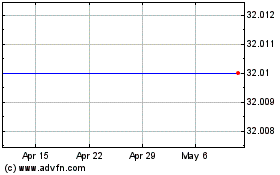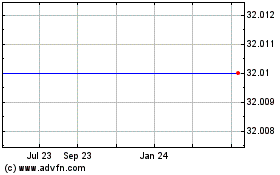Boeing's Aircraft Lending Unit Sees Global Changes Ahead
December 17 2009 - 4:44PM
Dow Jones News
The global market for aircraft financing is headed toward
healthy structural changes, but first it must weather another tough
year, a Boeing Co. (BA) executive said Thursday.
Boeing expects a worldwide need for $62 billion for airlines to
buy new commercial aircraft in 2010, down from $68 billion this
year, as fewer aircraft get delivered to airlines, Kostya
Zolotusky, managing director, capital markets development at Boeing
Capital Corp., said in an interview from London.
Boeing Capital on Thursday unveiled its forecast for the 2010
aircraft lending market. Boeing and Airbus will be asked to provide
less financing support to customers in 2010 than in 2009, according
to the forecast.
At the beginning of this year, some bankers believed there could
be a funding gap of $10 billion or more, as bone-dry credit markets
forced European banks out of the aircraft-finance business. Credit
woes also hit the parent companies of many aircraft lessors,
resulting in big players like International Lease Finance Corp., a
unit of American International Group (AIG), being put up for
sale.
But the capital markets opened up this year, allowing airlines
to raise cash, much of which will finance deals next year. As well,
regional banks in growth markets like China and the Middle East
contributed most of the $18 billion in bank financing. Government
export-import banks in the U.S. and Europe contributed $21 billion
of aid this year. Boeing and Airbus ended up plugging a relatively
small financing gap of $2.5 billion this year. Boeing said it will
help customers with $800 million of financing in 2009 and now sees
a need for less than that in 2010.
Boeing expects 2010 to be challenging, as Europe, the historical
mainstay for aircraft bank lending, remains on the sidelines.
Zolotusky said capital markets, mainly in the U.S., and regional
banks in China, Asia and the Middle East will contribute to
financing at similar levels to 2009, as will government banks.
The biggest change in the 2010 forecast is that Boeing expects
direct funding from aircraft lessors to fall to $6.5 billion from
$9 billion in 2009, as leasing companies receive less unsecured
funding from their financially weak parents. Those lessors will
still buy aircraft, but their funding will come from banks,
Zolotusky said.
Over the next few years, Zolotusky said, aircraft financing will
undergo some fundamental changes. He expects large lessors to brake
up into smaller businesses that rely on outside funding--from banks
and capital markets--rather than their parent organizations.
As well, new banking markets around the world will grow, and
more countries will add export-import banks to facilitate
international trade.
Ron Wainshal, head of Aircastle Ltd. (AYR), a medium-sized U.S.
lessor with a fleet of 128 aircraft, expects airlines increasingly
to lease, rather than buy, aircraft. He said about one-third of the
world's commercial fleet now is leased. While owning airplanes is
common at U.S. airlines, in emerging markets--which represent the
greatest growth opportunities--airlines are more likely to rent
planes. In some cases, their credit is too shaky to appeal to
banks. Other airlines want to conserve capital. Wainshal said banks
would rather work with leasing companies that have strong balance
sheets and good business experience rather than a start-up airline,
for example, or an established carrier with less-than-stellar
credit.
Boeing's 2010 forecast may be too optimistic for increased
global lending by regional banks, Wainshal said. "Some of these
banks aren't very sophisticated. They will learn, but it will take
them a while before they are ready to expand outside of their
domestic markets."
But Wainshal is bullish on his own business. "Earlier this year,
leasing companies weren't sure where they could place aircraft." He
said a deal that Aircastle announced Thursday to place six Airbus
aircraft with South African Airways means Aircastle has found homes
for all but one aircraft for 2010.
"It's a harbinger that the climate for aircraft leasing is
improving," he said, adding that "we believe we will be able to
access multiple sources of attractive debt financing for these
aircraft."
-By Ann Keeton; Dow Jones Newswires; 312-750-4120;
ann.keeton@dowjones.com
Aircastle (NYSE:AYR)
Historical Stock Chart
From Mar 2024 to Apr 2024

Aircastle (NYSE:AYR)
Historical Stock Chart
From Apr 2023 to Apr 2024
